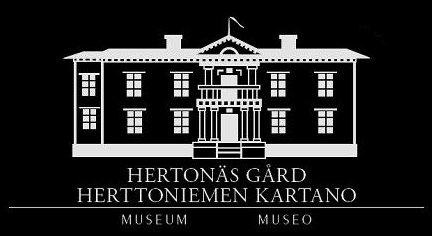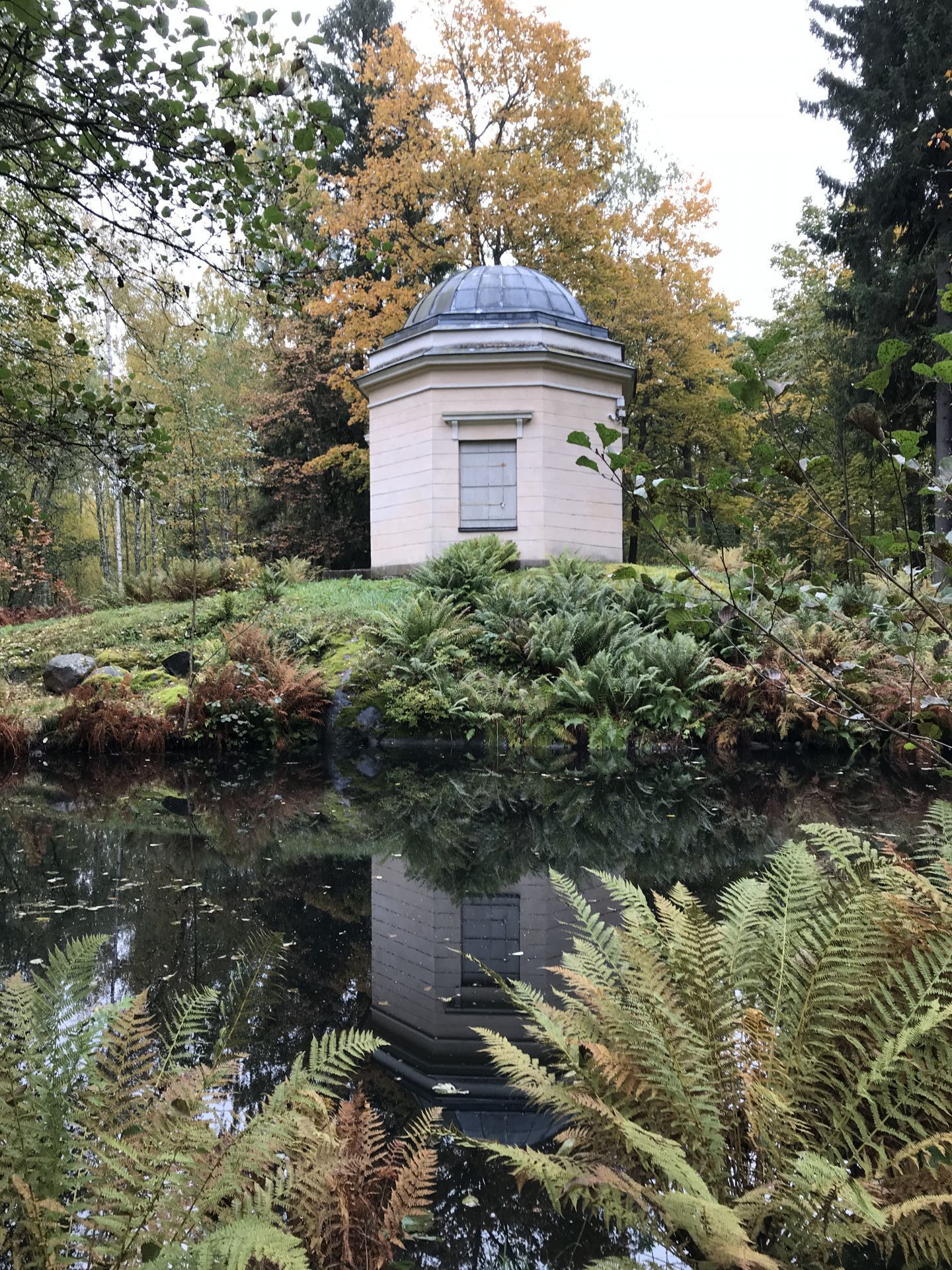
Hertonäs Manor's main buildning represent the neoclassicist style (Pehr Granstedt 1815). Photo: SOV.
A variation of the style is also calle Empire and emperor Alexander I of Russia built St. Petersburg's administrative center according to the neoclassicist ideals. Helsinki had got burnt down during the war in 1808 and the new style marked the fact that Finland now was a Grandduchy under Russian rule. The architect Carl Ludvig Engel, born in Germany, worked in St. Petersburg and was called to design Finlands new capitol, Helsinki, in the emperial style. Engel was also designed the two gazebos in Hertonäs Manor's park in the 1810's. The architect Pehr Granstedt, who designed the new mainbuildning in Hertonäs in 1815, was also inspired by the new style and designed many buildnings in Finland and in Helsinki, equipped with light colors and pillars.
One of the two gazebos in Hertonäs Manor's park resembles a Greek temple. Photo: SOV.
The interiör in Hertonäs Manor has also been reconstructed. The salon in the 1st floor was pained in Pompeian red that was fascionable in the 18th C. The site of Pompei (distoyed by Vesuvius in 79 AD) was a source of interest all over Europe. The pillars reflect the Greek style, but are fake: the material is painted food that only imitates marble.
.jpg)
The parlour in the 1st floor represent the late 19th C., but the colouring of the wall derives from the early 19th C. and reflect the neoclassicistic style. Photo: SOV.
Hertonäs Manor has a series of furniture that belonged to admiral Carl Olof Cronstedt, who served under Gustavus III before his return to Finland. The neoclassicism is represented in e.g. Cronstedt's bed, furniture from his library and other pieces.
The style was also political and refered to the antique democratic ideal e.g. in France and USA. The political aspect is also somewhat present in Helsinki, e.g. the new Finnish government was called "the Senate" (as in Rome). The Empire style lived on in different forms and element such as copies of antique art in the homes of the upper classes.
There is much more to say about the neoclassicism. What other objects at the museum derives from this era in the late 18th C. and early 19th C.? You are welcome to our museum to see for yourself! We are open today from noon to 2 PM. Or book a guided tour!
Source:
Bäcksbacka, Christina 1995: Viceamiral Carl Olof Cronstedts hem. SMYA 102. Finska fornminnesföreningen: Helsingfors

